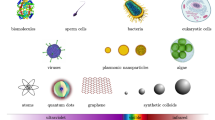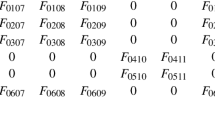Abstract
The physical principles of the polarization-optical method for studying stresses that is commonly called the photoelasticity method are considered. Using the model of a linear oscillator it is established that the birefringence effect observed in some materials during their deformation can be explained by a shift in the eigenfrequencies of the oscillators, namely charged particles inside the deformed body.
This approach has been used in determining the parameters of the pair interaction potential, in particular, the Mie potential using the experimentally determined birefringence value. The expression for the shape of the strain-optical coefficient, that is, a quantity that serves to relate the difference in the principal deformations and the relative path difference is obtained.
Similar content being viewed by others
References
A. Ya. Aleksandrov and M. Kh. Akhmetzyanov, Polarization–Optical Methods of the Mechanics of a Deformable Body (Nauka, Moscow, 1973) [in Russian].
G. Z. Sharafutdinov, “On the Phenomenon of Birefringence in Transparent Dielectrics,” in On Some Problems of Behavior of Viscous and Elastic–Plastic Structures, Ed. by V. P. Netrebko (Izd. Moscow Univ.,Moscow, 1989).
A. M. Krivtsov and N. V. Krivtsova, “Method of Particles and its Application to Mechanics of Solids,” Dal’nevost. Mat. Zh. 3(2), 254–276 (2002).
E. A. Ivanova, A. M. Krivtsov, N. F. Morozov, and A. D. Firsova, TheoreticalMechanics. Determination of Equivalent Elastic Characteristics of Discrete Systems (SPbSPU, St. Petersburg, 2004) [In Russian].
C. Kittel, Introduction to Solid State Physics (Phismatlit,Moscow, 1963) [in Russian].
Qian Xuesen, PhysicalMechanics (Mir,Moscow, 1963) [in Russian].
R.W. Christy and A. Pytte, The Structure ofMatter: an Introduction toModern Physics (Nauka,Moscow, 1969) [in Russian].
A. Animalu, Intermediate Quantum Theory of Crystalline Solids (Mir,Moskow, 1981) [in Russian].
D. S. Chemla (Editor), Nonlinear Optical Properties of Organic Molecules and Crystals, Vols. 1–2 (Academic Press, 1987l;Mir,Moscow, 1989).
L. I. Mandelstam, Lectures on Optics, Theory of Relativity and Quantum Mechanics (Nauka, Moskow, 1972) [in Russian].
E. I. Butikov, Optics (Nevskiy dialect, St.Petersburg, 2003) [in Russian].
B.M. Tareev, Physics of Dielectric Materials (Energiya,Moscow, 1973) [in Russian].
G. Z. Sharafutdinov, “Basic Relations of Photoelasticity,” Moscow Univ.Mech. Bull. 67 (1), 1–4 (2012).
Author information
Authors and Affiliations
Corresponding author
Additional information
Original Russian Text © G.Z. Sharafutdinov, 2018, published in Izvestiya Akademii Nauk, Mekhanika Tverdogo Tela, 2018, No. 3, pp. 97–108.
About this article
Cite this article
Sharafutdinov, G.Z. Investigation of the Photoelasticity Method. Mech. Solids 53, 354–359 (2018). https://doi.org/10.3103/S0025654418070142
Received:
Published:
Issue Date:
DOI: https://doi.org/10.3103/S0025654418070142




